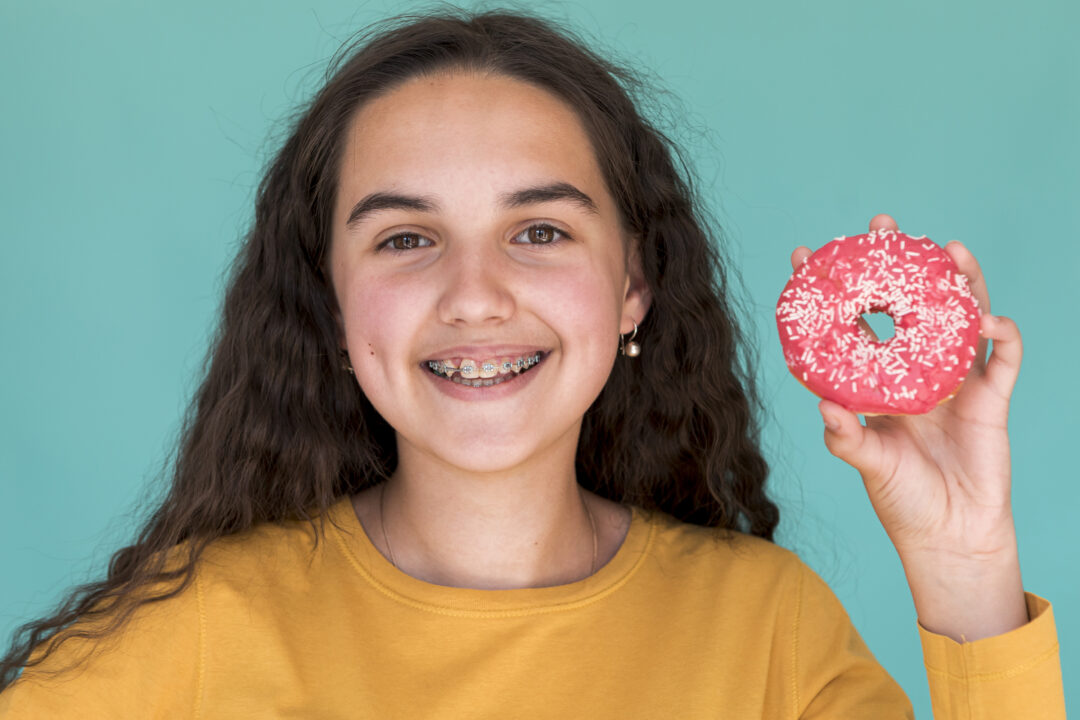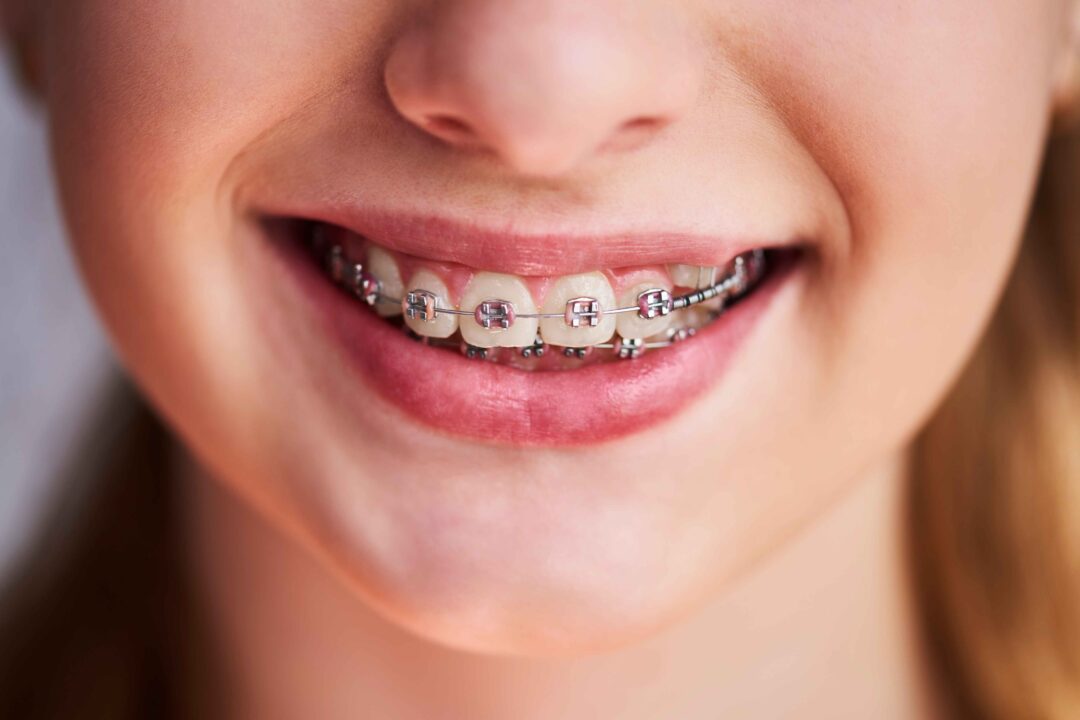Orthodontic Choices for Kids: Two-Phase Orthodontic Treatment Options for Children, and the Cost of Invisalign Without Insurance

As parents, we will do anything to make our kids’ smiles shine brighter, right? So, we should consider looking for professional guidance as soon as possible and consider the different orthodontic choices. Remember that the transformation of their smile can benefit from beginning at a young age.
This is why professionals recommend that children receive an early orthodontic evaluation around the age of 7. In the initial consultation, the orthodontist can detect potential problems, such as misaligned teeth, crossbites, overbites, and underbites. By addressing these issues at an early stage, kids can benefit from more efficient and less invasive treatments.
If you are wondering what the options are for children’s orthodontic treatment, keep reading as we explore all the details about healthy and beautiful smiles for our little ones!
What Is Two-Phase Orthodontic Treatment?
Well, let’s talk about two-phase orthodontics, which is a method that corrects dental and jaw problems in two phases: interceptive and comprehensive orthodontics. This is a perfect approach for kids and involves an early evaluation. Then, the orthodontist will recommend a comprehensive treatment to fix the dental issues efficiently.
The First Phase: Interceptive Orthodontics
Interceptive orthodontics is the first step of two-phase orthodontic treatment, and it begins when the patient has a mix of baby teeth and permanent teeth. This treatment allows you to address dental issues that can get worse over time, leading to a more complicated and expensive treatment in the future of your child. The orthodontist may use appliances like spacers, expanders, or traditional braces to correct crowded teeth or bite problems in this first stage.
The Second Phase: Comprehensive Orthodontics
Once your child lost all of their baby teeth, the orthodontist can proceed with the second phase, also known as comprehensive orthodontics. In this stage, the dental professional will focus on addressing the final alignment of the bite and teeth. They will recommend orthodontic appliances, such as traditional metal braces or clear aligners, to achieve that. This represents the last step to a beautifully aligned smile!
Benefits of Early Intervention
Now that you know the purpose of two-phase orthodontics, let’s talk about the benefits of early intervention and why you should consider it for your kids:
- Professionals recommend fixing orthodontic problems from a young age to reduce the issue’s severity and the treatment time.
- This method also prevents the need for more complicated treatments in the future, such as the need for surgical correction.
- Addressing orthodontic issues early can improve your child’s oral health and increase self-esteem.
In essence, two-phase orthodontics is an effective method focusing on early intervention. This approach will help orthodontists manage all kinds of dental problems, helping to improve oral health, reduce treatment times, and increase self-confidence, ensuring that your child’s smile develops perfectly and functions correctly.
Children’s Treatment Options
Fortunately, there are several treatment options for children. We recommend taking your kid to the orthodontist’s office to determine the best course of action. They are professionals who thoroughly examine their dental structure and decide if they need two-phase treatment.
It is essential to understand that the treatment will depend on several factors, such as the patient’s age, the complexity of their dental issues, and the development of their teeth and jaws. If the orthodontist determines the problems are severe and could worsen over time, they may recommend early intervention to guide the teeth into their correct positions. On the other hand, some kids will only need comprehensive treatment once their permanent teeth erupt.
Common Orthodontic Issues in Children
Orthodontic issues can be pretty common in the development of children’s smiles, impacting their oral health and appearance. Correcting these problems at an early age is essential to ensure proper dental development and improve oral health.
Remember that dental treatment can help correct these issues and create a healthier smile. Here’s a list of some of the most common problems:
Crowding or Spacing of Teeth:
Crowding refers to the situation of insufficient space in the jaw so the teeth can align properly. This will lead to the overlapping of teeth or crooked teeth. On the other hand, spacing refers to the gaps between teeth. Both issues can affect the functionality and the appearance of the teeth.
Crossbite:
A crossbite occurs when the upper teeth sit behind the lower teeth when the jaw rests. This could lead to misaligned jaw growth and difficulty in biting and chewing.
Overbite or Underbite:
An overbite happens when the upper front teeth overlap the lower front teeth. On the contrary, an underbite occurs when the lower front teeth protrude ahead of the upper ones. These orthodontic issues can affect your child’s facial appearance and their ability to speak correctly.
Jaw Growth Discrepancies:
There might be cases where a kid’s upper or lower jaw will not grow correctly. This could lead to a misaligned bite and functional problems.
Treatment Options in the First Phase:
In the realm of early orthodontic treatment, several appliances address specific dental and jaw problems in children. Orthodontists use these devices to guide the growth and alignment of teeth and jaws. Here are some common orthodontic appliances used during this initial phase:
Palatal Expanders:
These fantastic devices help widen the upper jaw, creating more space so the teeth can fit perfectly together. Palatal expanders can address orthodontic problems, such as crowded teeth and crossbites.
Space Maintainers:
These tools are really helpful if your kid loses a baby tooth prematurely. Space maintainers will keep the space open when the permanent tooth is ready to erupt properly!
Treatment Options in the Second Phase:
In the second step of the two-phase treatment, orthodontists will focus on the last details to achieve a perfect smile! Let’s explore the most popular options:
Braces:
Of course, we are referring to traditional braces with metal brackets and wires since this is the most reliable choice in the second phase. These appliances will move the teeth into their proper positions, correcting alignment issues.
Clear Aligners:
Nowadays, there is a more comfortable and modern solution for orthodontic issues; we are talking about clear aligners like Invisalign. These appliances consist of transparent trays, representing a more discreet alternative to metal braces.
How Much Is Invisalign Without Insurance?
If you want a beautifully aligned smile without the discomfort of metal wires and brackets, we have the perfect option for you! Invisalign is an excellent alternative for addressing all of your dental problems, and the best part is that they are comfortable, transparent, and removable.
Invisalign First and Invisalign Teen
Thinking about the needs of patients of all ages, Invisalign offers two specialized treatments: Invisalign First and Invisalign Teen.
There is Invisalign First for little children, which addresses the unique challenges and needs of a growing smile. The trays exert gentle pressure that slowly guides the teeth and jaw into their correct positions, creating a solid foundation for future treatment.
On the other hand, Invisalign Teen offers several features, such as eruption tabs that leave space in the aligners for the teeth to grow in, and compliance indicators, which are small blue dots that fade away after a full two weeks of wear.
Factors Influencing the Cost of Invisalign
Several factors can influence the final cost of Invisalign treatment. The most important may be the severity of the orthodontic problem that needs to be fixed. Remember that more complicated misalignments require a more extended treatment plan, making it more expensive.
Although the cost of each Invisalign treatment will depend on different factors, we can talk about an average cost that ranges from $3,000 to $7,000. However, we recommend you consult an orthodontist for a personalized budget based on your child’s unique needs.
Making the Cost More Manageable
Fortunately, there are several options to make the cost of dental treatment more manageable. For instance, you can ask for financing options or discounts to reduce the overall price of orthodontic appliances. In addition, many dental practices offer monthly payment plans, allowing you to divide the treatment cost over time. You can visit our website for more information about our financial options. At Reopelle Orthodontics, we are here to help you find the best Invisalign solution to suit your needs and budget.
Transforming Smiles – Book your Orthodontic Appointment Now!
Let’s think of two-phase orthodontics as the foundation for a healthy and brighter smile for kids! This is an excellent method to improve their oral health, enhance the aesthetic of their smile, and increase their self-esteem. If you are looking for professional guidance and personalized treatment, we recommend that you reach out to Reopelle Orthodontics. Our Roanoke Orthodontics team offers several treatment options using the most advanced technology and the best materials available. So, don’t wait; book your orthodontic appointment today!



